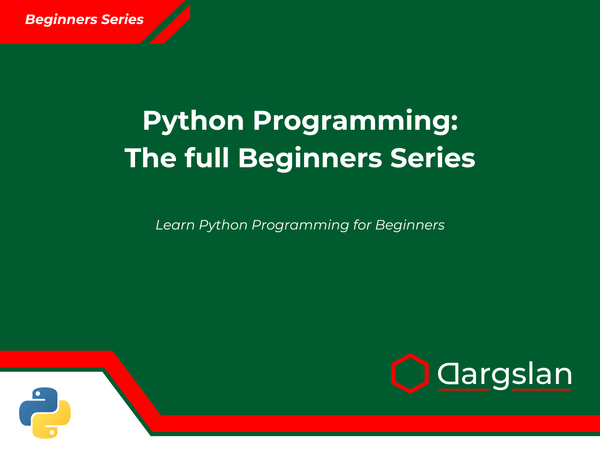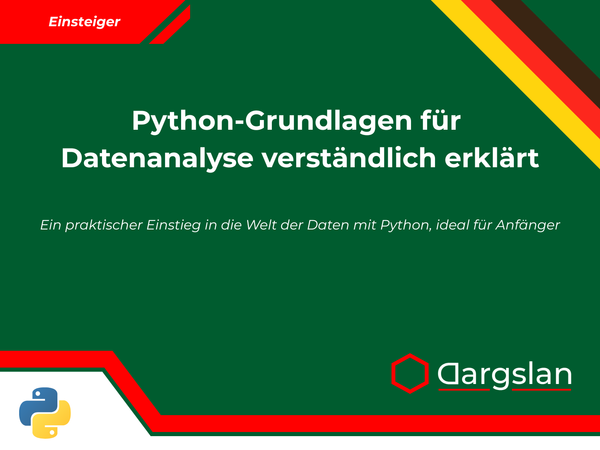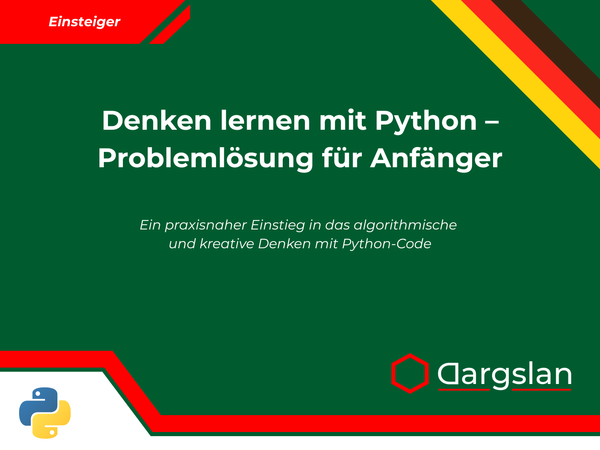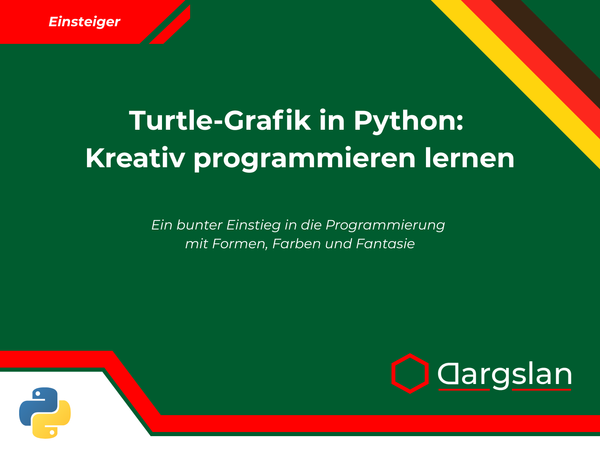Book Review: Learn Python by Building Calculator Apps
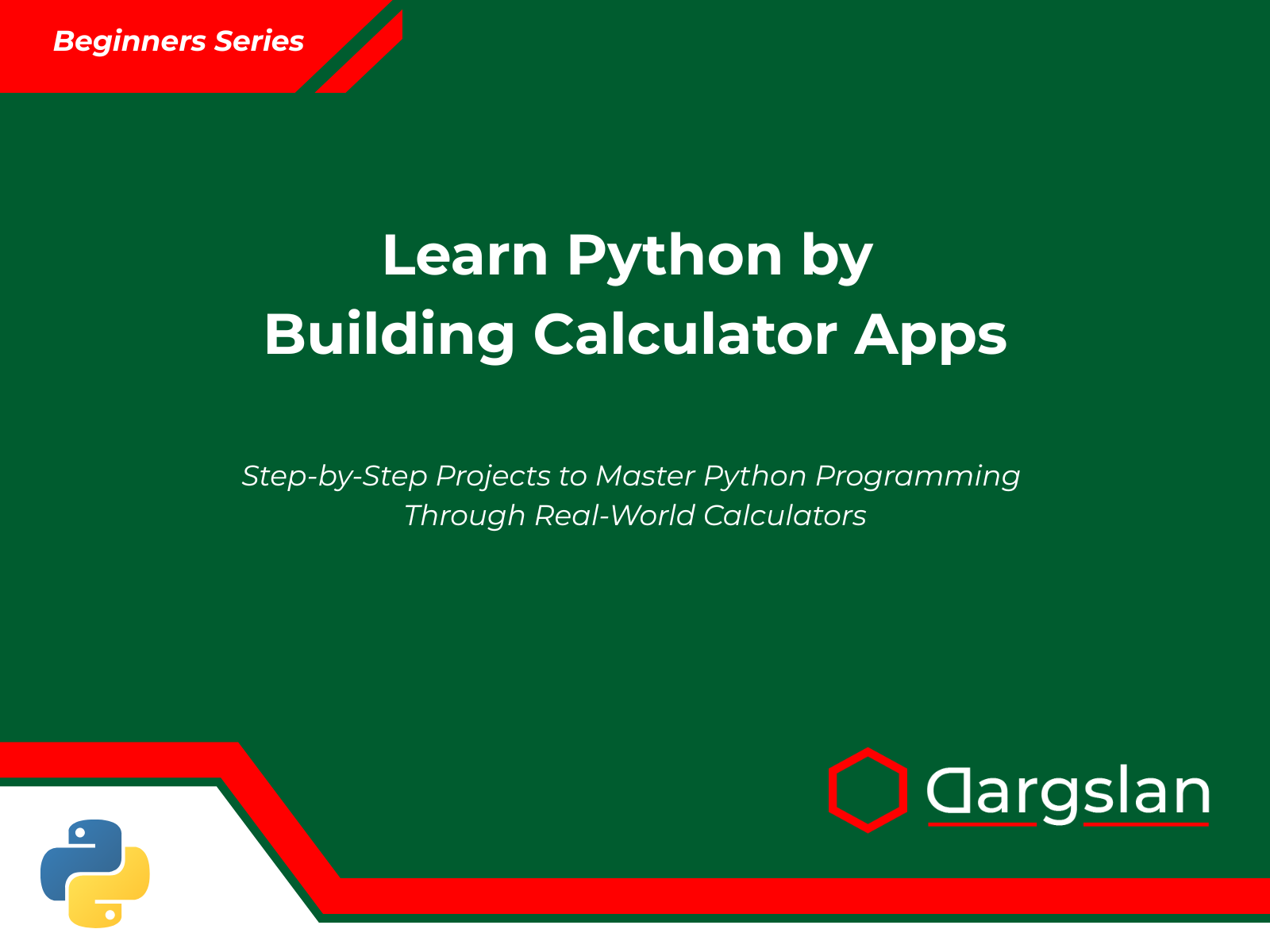
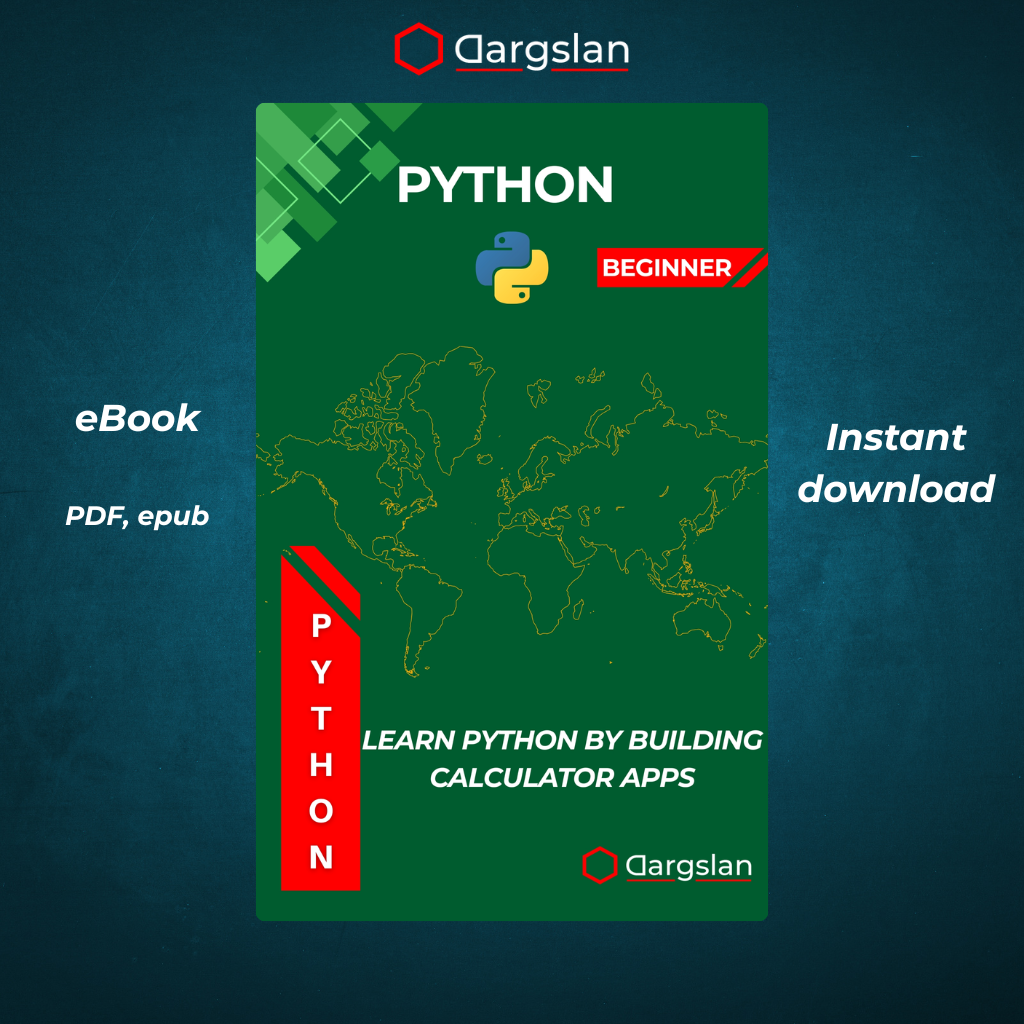
Learn Python by Building Calculator Apps
Step-by-Step Projects to Master Python Programming Through Real-World Calculators
Learn Python by Building Calculator Apps: A Comprehensive Book Review
Introduction: A Revolutionary Approach to Python Programming
In the ever-evolving landscape of programming education, "Learn Python by Building Calculator Apps: Step-by-Step Projects to Master Python Programming Through Real-World Calculators" stands out as an innovative and practical guide for beginners and intermediate learners alike. This comprehensive book, authored by Dargslan, takes a unique project-based approach to teaching one of the world's most versatile programming languages.
Unlike conventional programming books that often overwhelm readers with abstract concepts, this volume uses the familiar context of calculators to introduce Python programming in digestible, practical chunks. The approach is brilliant in its simplicity: by building increasingly complex calculator applications, readers naturally absorb Python fundamentals while creating useful tools they can immediately understand and appreciate.
Why Python and Why Calculators? The Perfect Learning Combination
The Python Advantage
Python has established itself as a premier programming language for several compelling reasons:
- Readability: Its clear, English-like syntax makes it more accessible than many other languages
- Versatility: From web development to data science, AI to automation, Python excels across domains
- Community Support: A vast ecosystem of libraries, frameworks, and online resources
- Industry Demand: Consistently ranked among the most in-demand programming skills
- Low Entry Barrier: Beginners can achieve meaningful results quickly
The Calculator Context: Genius in Simplicity
The book's unique focus on calculator applications is deliberate and pedagogically sound:
- Universal Understanding: Everyone intuitively understands what calculators do
- Scalable Complexity: Calculator functions can range from basic arithmetic to complex scientific operations
- Practical Utility: Each project results in a useful application
- Comprehensive Learning: Building calculators touches on numerous programming concepts
- Incremental Progress: Clear path from simple to sophisticated applications
A Chapter-by-Chapter Journey Through Python Mastery
Chapter 1: Why Learn Python by Building Calculators?
The book begins by establishing a solid foundation for the learning approach. This chapter outlines:
- The strategic advantages of project-based learning
- How calculator applications encompass fundamental programming concepts
- How the skills learned transfer to other domains of Python development
- Setting up a Python development environment
- Overview of the journey ahead
This introductory chapter effectively sets expectations and motivates readers by connecting the learning process to tangible outcomes.
Chapter 2: Your First Calculator (Basic Arithmetic)
The journey begins with a simple yet powerful project that covers:
- Variables and basic data types in Python
- Input and output functions
- Basic operators (+, -, *, /)
- Simple control flow
- Error handling basics
By building a basic arithmetic calculator, readers immediately apply core Python syntax in a practical context. The author carefully explains each line of code, ensuring complete understanding before moving forward.
# Example code snippet from Chapter 2
def basic_calculator():
num1 = float(input("Enter first number: "))
num2 = float(input("Enter second number: "))
operation = input("Enter operation (+, -, *, /): ")
if operation == "+":
result = num1 + num2
elif operation == "-":
result = num1 - num2
elif operation == "*":
result = num1 * num2
elif operation == "/":
if num2 != 0: # Basic error handling
result = num1 / num2
else:
return "Error: Division by zero"
else:
return "Invalid operation"
return f"Result: {result}"
Chapter 3: Tip Calculator
Building on the foundation established, Chapter 3 introduces:
- Functions and modular code structure
- Working with percentages
- Formatting output
- Validating user input
- Basic algorithm design
The tip calculator project elegantly demonstrates how even simple applications can be structured professionally. Readers learn to break down problems into logical steps and translate those steps into Python code.
Chapter 4: BMI Calculator
This chapter delves deeper into:
- Mathematical formulas in Python
- Conditional logic and complex decision structures
- String formatting and presentation
- Working with different units of measurement
- More sophisticated input validation
The BMI calculator introduces readers to translating real-world formulas into code while managing more complex logic flows.
Chapter 5: Temperature Converter (Celsius ↔ Fahrenheit)
Chapter 5 explores:
- Creating bidirectional converters
- Function design and reusability
- Switch-like structures in Python
- Handling edge cases
- Testing strategies
The temperature converter demonstrates how to build flexible tools that work in multiple directions, introducing important concepts about function design and code organization.
Chapter 6: Age Calculator from Birth Year
This chapter introduces:
- Working with dates and times in Python
- The datetime module
- More advanced calculations
- Handling different user inputs
- Edge cases like leap years
The age calculator project connects Python programming to real-world time calculations, introducing important library usage along the way.
Chapter 7: Loan or Interest Calculator
Moving into more complex territory, this chapter covers:
- Financial mathematics in Python
- Working with floating-point numbers
- More complex user interfaces
- Visualization of results
- Amortization schedules
The loan calculator represents a significant step up in complexity, introducing readers to real-world financial applications of programming.
Chapter 8: Multi-Operation Scientific Calculator
Chapter 8 represents a substantial leap forward:
- Advanced mathematical operations
- The math module
- Implementing multiple calculation modes
- Creating a menu-driven interface
- Managing complex program state
This ambitious project consolidates previous learning while introducing more advanced concepts, resulting in a powerful scientific calculator with trigonometric functions, logarithms, and more.
Chapter 9: Building a GUI Calculator with Tkinter
The book shifts gears to introduce graphical interfaces:
- Basics of GUI programming
- The Tkinter library
- Event-driven programming
- Layout management
- Creating responsive interfaces
This chapter transforms the command-line calculators into visually appealing applications with buttons, entry fields, and intuitive user interfaces.
# Simplified example from Chapter 9
import tkinter as tk
def create_calculator_gui():
window = tk.Tk()
window.title("Python Calculator")
# Create display
display = tk.Entry(window, width=25, borderwidth=5)
display.grid(row=0, column=0, columnspan=4, padx=10, pady=10)
# Create digit buttons
for i in range(1, 10):
button = tk.Button(window, text=str(i), padx=20, pady=10,
command=lambda i=i: button_click(display, i))
button.grid(row=(9-i)//3+1, column=(i-1)%3)
# Create operation buttons
operations = ['+', '-', '*', '/']
for i, op in enumerate(operations):
button = tk.Button(window, text=op, padx=20, pady=10,
command=lambda op=op: add_operation(display, op))
button.grid(row=i+1, column=3)
# Add equals button
equals_button = tk.Button(window, text="=", padx=20, pady=10,
command=lambda: calculate(display))
equals_button.grid(row=5, column=1, columnspan=2)
window.mainloop()
Chapter 10: Final Project – All-in-One Console Calculator
The culminating project brings everything together:
- Complex application architecture
- Object-oriented programming
- Module organization
- Advanced error handling
- User experience design
This ambitious final chapter guides readers through creating a comprehensive calculator application that incorporates all the features from previous chapters into a cohesive, well-designed program.
The Valuable Appendices: Beyond the Core Content
Appendix A: Python Syntax Refresher
This handy reference section covers:
- All essential Python syntax elements
- Quick reference tables
- Code examples
- Common patterns
Ideal for quickly refreshing knowledge or clarifying syntax questions without searching through multiple chapters.
Appendix B: Math Symbols and Formulas Used
A comprehensive reference that:
- Explains all mathematical formulas used in the book
- Provides context for how they work
- Shows multiple implementation approaches
- Connects mathematical concepts to Python code
This appendix ensures that readers can understand the underlying mathematics without requiring an advanced math background.
Appendix C: Debugging Tips for Beginners
An invaluable resource that covers:
- Common Python errors and their meanings
- Systematic debugging approaches
- Using Python's debugging tools
- Troubleshooting strategies for calculator applications
- Prevention techniques
This practical guide helps readers overcome the frustration often associated with debugging.
Appendix D: Challenge Ideas
To extend learning beyond the book:
- 20+ additional calculator project ideas
- Graded difficulty levels
- Implementation hints
- Extension suggestions
- Real-world applications
This appendix ensures that motivated learners can continue applying their skills to new challenges.
Key Strengths and Learning Outcomes
Technical Skills Development
Readers will develop proficiency in:
- Core Python syntax and programming constructs
- Control structures including conditionals and loops
- Functions and modular programming
- Object-oriented programming principles
- GUI development with Tkinter
- Error handling and debugging
- Working with libraries like datetime and math
- Input validation and user experience design
Practical Programming Approaches
Beyond syntax, the book cultivates:
- Problem decomposition skills
- Algorithm design thinking
- Testing strategies
- User experience considerations
- Code organization principles
- Documentation practices
- Iterative development approaches
Transferable Knowledge
The skills gained extend well beyond calculator applications:
- Mathematical modeling applicable to data science
- User interface design relevant to web and application development
- Input processing fundamental to many programming tasks
- Error management essential in all software development
- Structured programming approaches valuable in any context
Who Will Benefit Most from This Book?
Ideal for Beginners
Complete newcomers to programming will appreciate:
- The gentle learning curve
- Concrete, familiar examples
- Immediate results and feedback
- Comprehensive explanations
- No assumed prior knowledge
Valuable for Self-Taught Programmers
Those with some programming experience but looking to learn Python will benefit from:
- The structured approach
- Project-based learning
- Best practices throughout
- Filling knowledge gaps
- Practical applications
Useful for Educators
Teachers and trainers will find:
- Ready-made project examples
- Logical learning progression
- Concepts explained from multiple angles
- Adaptable material for classroom use
- Built-in assessment opportunities through projects
The Author's Approach: Learning by Doing
Dargslan's teaching methodology stands out through:
- Contextual Learning: Concepts are never taught in isolation but always in the context of solving a specific problem
- Incremental Complexity: Each project builds on previous knowledge while introducing new concepts
- Practical Utility: Every project results in a useful application that performs real-world tasks
- Multiple Explanations: Difficult concepts are explained from different angles to ensure understanding
- Code Analysis: Completed code is reviewed to reinforce best practices and design decisions
Comparing Learning Approaches: Why This Book Stands Out
Traditional Textbooks vs. Project-Based Learning
While traditional textbooks often present concepts sequentially with isolated examples, "Learn Python by Building Calculator Apps" integrates concepts into meaningful projects. This approach helps readers:
- See the immediate application of each concept
- Understand how different elements of Python work together
- Build a portfolio of functioning applications
- Stay motivated through tangible accomplishments
- Develop problem-solving skills alongside syntax knowledge
Online Tutorials vs. Comprehensive Framework
Unlike fragmented online tutorials, this book provides:
- A coherent, progressive learning path
- Consistent coding style and best practices
- Deep explanations rather than superficial examples
- A complete mental model of Python programming
- Thoughtfully sequenced skill development
Reader Testimonials: The Impact of the Calculator Approach
"After trying multiple Python books that left me confused, this approach finally made programming click for me. Building calculators gave me immediate results I could understand while teaching me proper Python techniques." - Alex K., Beginner Programmer
"As someone with experience in other languages, I found this book perfect for quickly getting up to speed with Python. The projects are simple enough to be approachable but complex enough to cover important concepts." - Jamie T., Software Developer
"I use this book in my introductory programming course. The calculator projects provide the perfect balance of accessibility and depth, and students stay engaged because they're building useful tools from day one." - Professor Samantha R., Computer Science Department
"What sets this book apart is how it connects mathematical concepts to programming so seamlessly. As a data science aspirant, this approach built my confidence in both areas simultaneously." - Michael L., Data Analyst
Beyond the Book: Continuing Your Python Journey
Applying Calculator Knowledge to Other Domains
The skills developed through this book transfer directly to:
- Data Science: Mathematical operations, handling user input, and working with libraries
- Web Development: Modular code structure and user interface design
- Automation: Script development and function organization
- Application Development: From console to GUI interfaces
Recommended Next Steps
After completing all projects, readers are well-positioned to:
- Explore web development with Flask or Django
- Dive into data analysis with pandas and NumPy
- Explore automation with Python scripts
- Develop more advanced GUI applications
- Contribute to open-source Python projects
Frequently Asked Questions
Do I need prior programming experience to use this book?
No, the book starts from first principles and assumes no prior knowledge of programming. Complete beginners will find the pace and explanations appropriate.
How much mathematics background do I need?
Only basic arithmetic is required to understand the core concepts. When more advanced formulas are used (like in the scientific calculator), they are thoroughly explained.
Can this book help me prepare for a programming career?
Absolutely. The book teaches not just Python syntax but professional approaches to problem-solving, code organization, and user experience design—all valuable skills in programming careers.
How long does it take to work through all the projects?
Most readers complete the book in 4-8 weeks, depending on prior experience and time commitment. Each project can be completed in a few hours, though deeper understanding comes from experimentation and modification.
Is the book suitable for children learning to code?
The material is most appropriate for high school students and adults. Younger children may need additional guidance but could still benefit from the early chapters.
Does the book cover Python 3 or Python 2?
The book uses Python 3 exclusively, focusing on current best practices and syntax.
Conclusion: Building Knowledge Block by Block
"Learn Python by Building Calculator Apps" represents a refreshing approach to programming education. By anchoring abstract programming concepts in the familiar territory of calculators, the book creates an accessible pathway into what can otherwise be an intimidating field.
The carefully structured progression from basic arithmetic to a comprehensive all-in-one calculator ensures that readers build confidence alongside competence. Each project reinforces previous learning while introducing new concepts at a manageable pace.
Perhaps most importantly, this book transforms readers from passive consumers of information into active creators of working applications. This transformation is the essence of becoming a programmer—moving from understanding code to writing it confidently and purposefully.
Whether you're a complete beginner, a programmer new to Python, or an educator looking for effective teaching materials, "Learn Python by Building Calculator Apps" provides a solid foundation through its innovative, project-based approach. By the final chapter, you won't just know Python syntax—you'll know how to think like a programmer and have the confidence to tackle your own unique projects.
In a field where learning resources are plentiful but true understanding can be elusive, this book stands out as a beacon for those seeking not just knowledge, but mastery through practice. The calculator may be one of humanity's oldest computational tools, but in this book, it becomes the vehicle for thoroughly modern learning.
About the Author
Dargslan is an experienced programmer and educator specializing in making complex technical concepts accessible to learners at all levels. With over a decade of experience in Python development and teaching, Dargslan has developed a deep understanding of the challenges faced by new programmers and the most effective methods to overcome them.
Having taught thousands of students both online and in traditional classrooms, Dargslan developed the calculator-based learning approach after observing how concrete, practical projects consistently led to better comprehension and retention than abstract exercises.
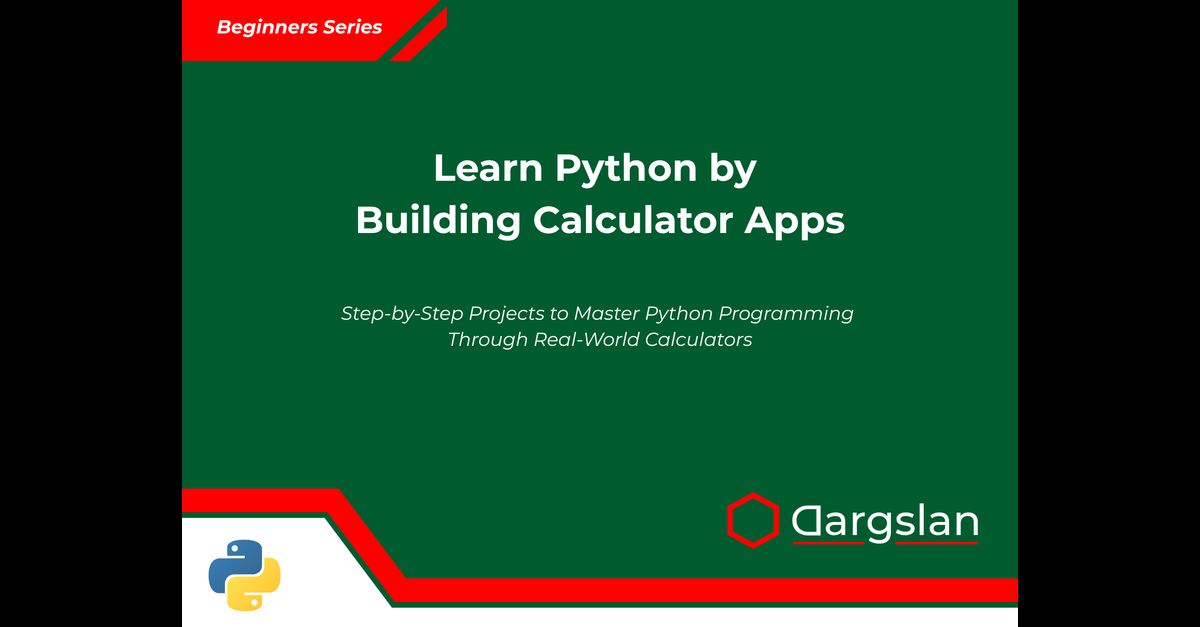
Learn Python by Building Calculator Apps



